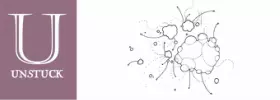Post by Ben Roberts
With this exercise, you can create your own poetry or prose using mobile apps.
1. Select three or more reading apps. For this demonstration, I have used:
* Poetry’s randomized poem generation machine;
* Connu’s Pandora-inspired short story collection;
* YouVersion’s scripture-in-translation database;
* the new Kindle-based literary journal Day One;
* the Audible app; and
* the new “read it now” feature on the Goodreads social media app.
2. Open an app, click around a bit at random (to get past the welcome screen and into the text of a book, article, poem, etc.), and copy the first block of text you find. You can copy this text by hand or type it into a Word doc.
E.g.,
Poetry: "From The Task, Book V: The Winter Morning Walk"
Connu: "How many heavens do you need to be happy?"
YouVersion: "Psalm 119:11 -- I have stored up your word in my heart that I might not sin against you."
Day One: "One part of our mission..."
Audible: "But still as tired of life as he sometimes felt..."
Goodreads: "From India one of these days, June or July, she forgot which..."
3. Collage the text to create new phrases. In the example below, I've created miniature first-, second-, and third-person narratives, along with a short lyric poem.
#
Narratives:
1st Person:
I have stored up how many heavens from the task? One of these days, June or July, our mission might not sin.
2nd Person:
The winter morning walks against you. Do you need to be happy?
3rd Person:
She forgot to be the task. He sometimes felt sin.
Lyric:
Winter morning word of life
The task in my heart
Life from India:
One part June or July
Sin against happy
Post by Ben Roberts
A year ago I took a job that required me to wake up at five in the morning. I hated the hours, but I needed the money. For years, morning had been my time to write—before the demands of the day wrecked my inner calm.
“My time” is a nonsensical concept. Also that anything can wreck my inner calm speaks to the fragility of the way I structure my framework for inner calm. Also, the morning, just before dawn, is where music is born.
I pray more. I’ve become indebted to the generative music apps developed by Brian Eno and Peter Chilvers. Inner calm is best thought of as an algorithm by which a certain phrase or tone, a prayer, is repeated at determined intervals, combining with the demands of the day to create a new song. I am in the midst of a complex process of simplifying my life. I take naps in the afternoon.
#
A year ago is a nonsensical concept. “My time” took a job that required me to wake up at five in the morning. I hated my inner calm, but I needed the fragility of the way I structured my framework for inner calm. Also that anything can wreck the hours. For years morning time, just before dawn, is where music is born. Also the morning is money.
I pray in the afternoon. I take naps to the generative music software developed by Brian Eno and Peter Chilvers. I’ve become indebted in the afternoon. Inner calm is a complex process of simplifying my life. I am best thought of as an algorithm by which a certain phrase or tone, a prayer, is repeated at determined intervals, combining with the demands of the day to create a new song. I take naps in the afternoon.
#
I take naps in the afternoon. Prayer is a nonsensical concept. A year ago is an afternoon. “My time” took to the generative music software developed by Brian Eno and Peter Chilvers. I take naps, a job that requires me to wake up at five in the morning. I’ve become indebted to my inner calm. I hated a complex process of simplifying my life, but I needed an algorithm by which a certain phrase or tone, a prayer, is repeated at determined intervals, combining with the demands of the day to create a new song. Also that anything in the afternoon.
#
Also that anything naps in the afternoon. Hate is a nonsensical concept. Prayer is an algorithm.
* * *
The preceding is an example of a writing exercise based on an algorithm inspired in part by Brian Eno’s Music for Airports, a pioneering work of generative art, which can now be explored further in the app Air, developed by Peter Chilvers and Sandra O’Neill.
This generative writing experiment follows these steps:
Part 1. Write two paragraphs each comprised of three sentences. Write a third paragraph of four sentences.
Part 2. Blend up the three paragraphs to create two paragraphs -- by, e.g., assigning the subject of the first sentence in the first paragraph to the verb and object of the first sentence in the second paragraph. If you like, you may select a sentence at random (e.g., "I take naps in the afternoon") to be fully preserved.
Part 3. Blend up the two paragraphs yielded in Part 2. You may or may not preserve a phrase. This yields one large paragraph.
Part 4. Blend up the remaining paragraph, and shorten it. This yields three to four sentences.
A point on aesthetics and grammar: these “rules” are fluid and are meant to be followed like a family recipe; exercise your own measure. Grammar, however, should be slightly more inflexible even if it becomes “incorrect” (i.e., don’t change the tense/number even as you combine the paragraphs).

 RSS Feed
RSS Feed